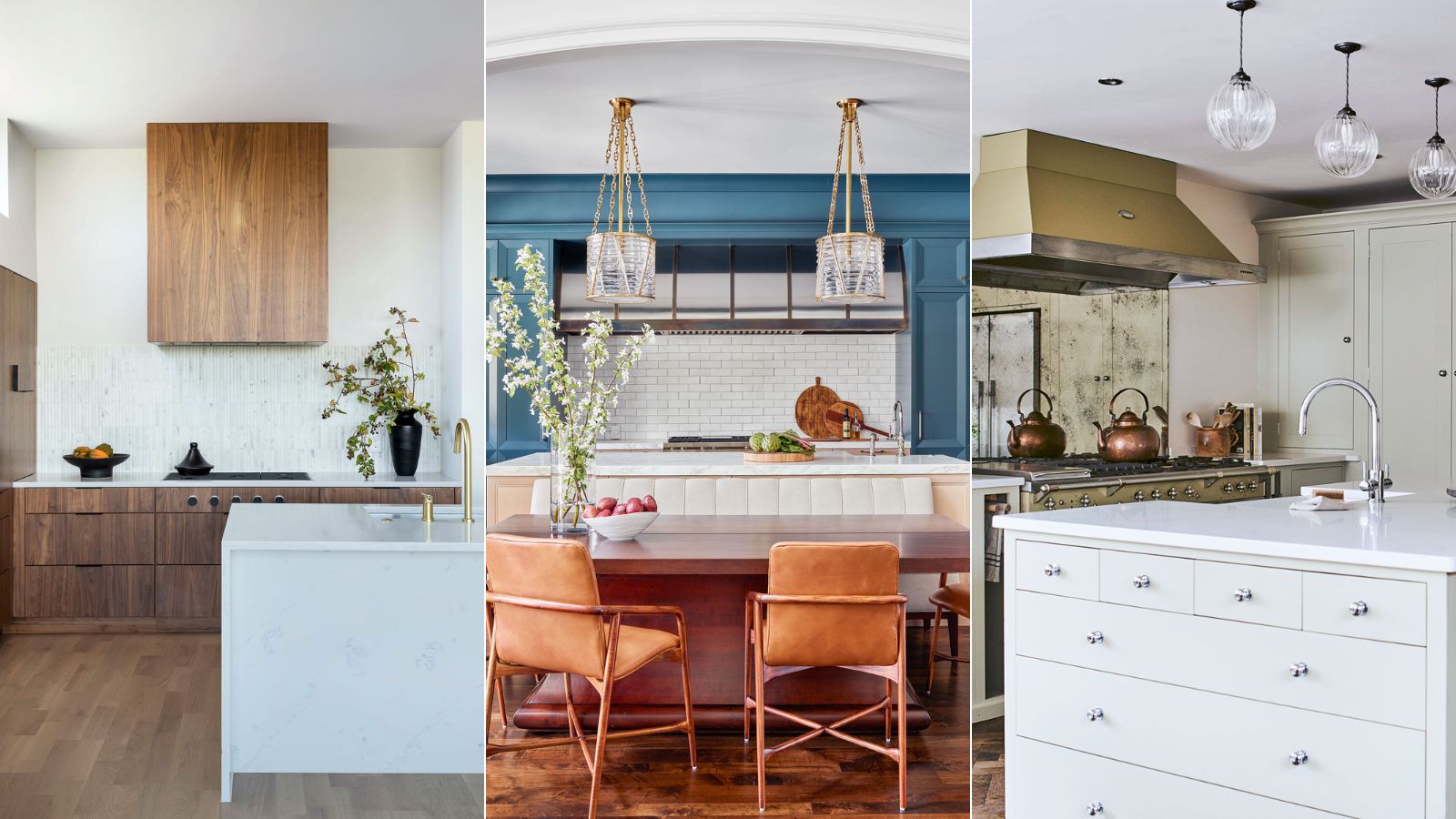
To some, they remain the final designer flourish, yet the extractor hood is a vital part of the modern kitchen.
As Richard Trefer, extraction category manager at Miele explains, ‘Consumers often choose their hood because of its look, but the most important factor is performance; the extractor has to be able to effectively and efficiently remove grease and odor. Noise levels also require careful consideration, especially in an open-plan scheme,’ adds Richard. ‘Increasingly, the kitchen is used as a social space, so it’s now preferable to have a cooker hood that won’t kill the conversation as soon as it’s switched on.’
Fortunately, hood technology has kept up with that of hobs, and there has never been a better selection of models on offer – from gilded designs with hidden kitchen storage to discrete ceiling-mounted and smart hob-top downdraft designs.
Statement extractor hoods that embrace form and function
Blending efficiency with style, an effective extractor fan and hood is a must for any modern kitchen. Here, interior and kitchen designers share their favorite extractor hood additions that prove this functional must-have should be more than just an afterthought.
1. Opt for full exposure
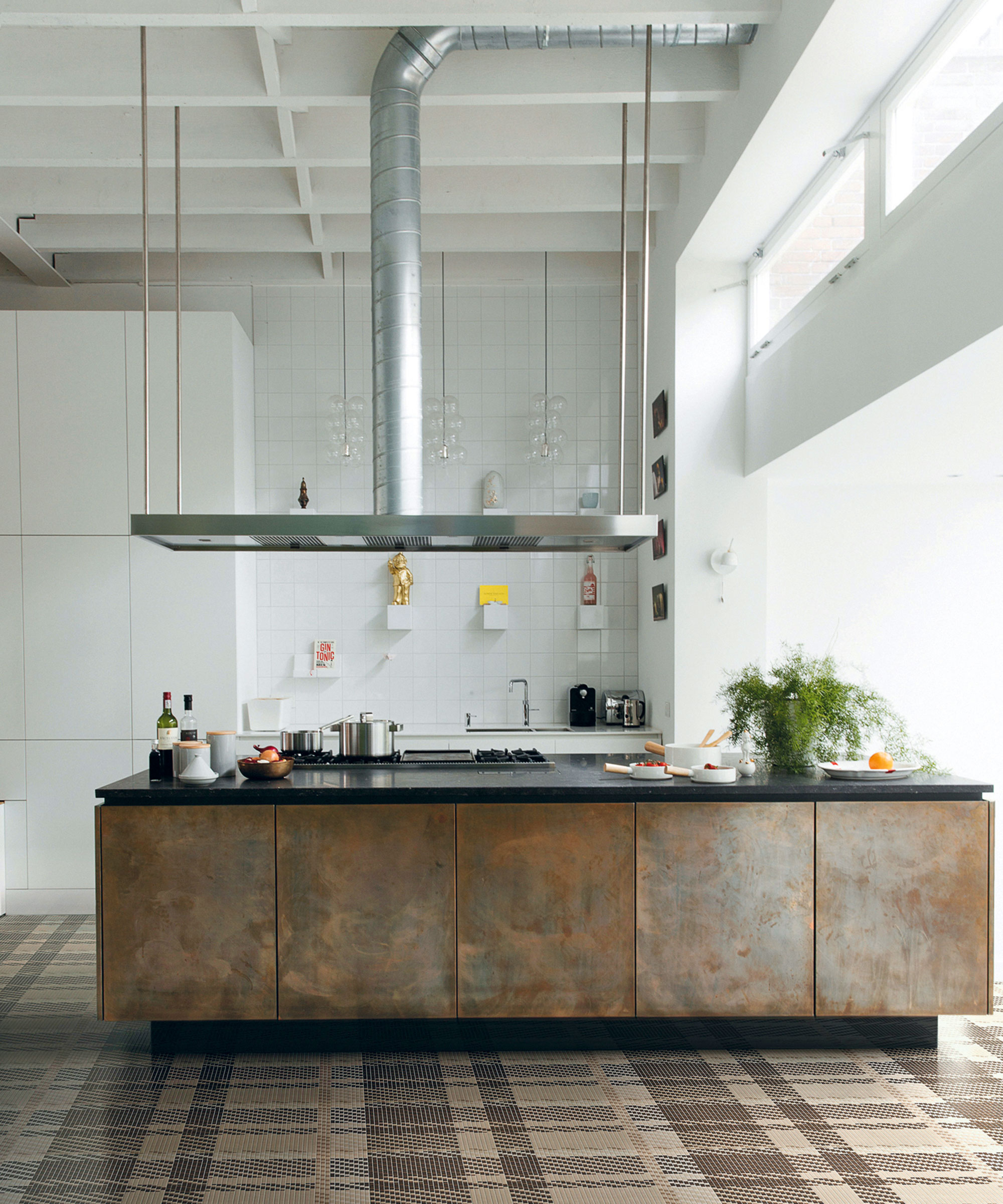
An industrial-style stainless steel extractor calls for exposed ducting, especially in kitchens with soaring ceilings as seen in this airy loft apartment. And if your ceilings aren’t quite as sky-bound, exposing the ducting is an effective way to open up the space between rafters, creating more visible height. Avoid making the ductwork the sole focus, or it will steal all the attention from the kitchen below.
Here, it blends into the rafters, so it is still visible and an attractive feature but doesn’t stand out or unbalance the scheme. Slim steel support poles suspend the extractor in position, allowing sufficient space below to ensure a clear view through the room.
2. Invest in sustainable wood
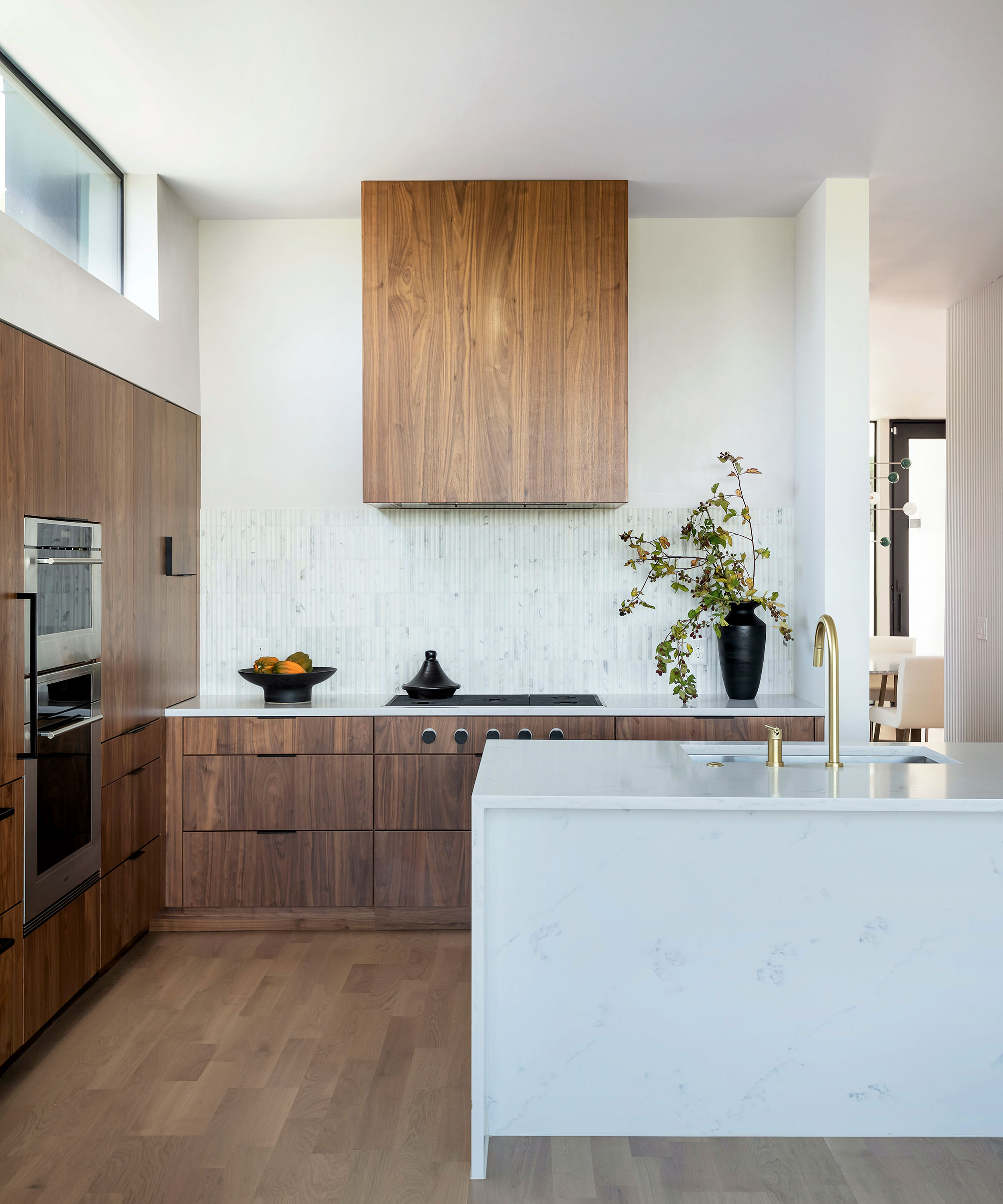
Cladding the extractor unit in the same wood veneer as the surrounding cabinetry presents a seamless design story. ‘With the kitchen located right off the main living room, we really wanted the space to feel cohesive with the rest of the home,’ recalls Sara Cukerbaum, principal designer, SLIC Design.
To make the kitchen less “kitchen”, she decided to panel all the appliances in walnut, including the under-mounted Wolf extractor. ‘The idea was to keep the palette of the house limited so we wouldn’t take away from the striking architecture,’ Sara continues. ‘The vent hood became its own architectural element, balancing the transom window above the kitchen cabinets and oversized kitchen island.’
3. Marvel at marble
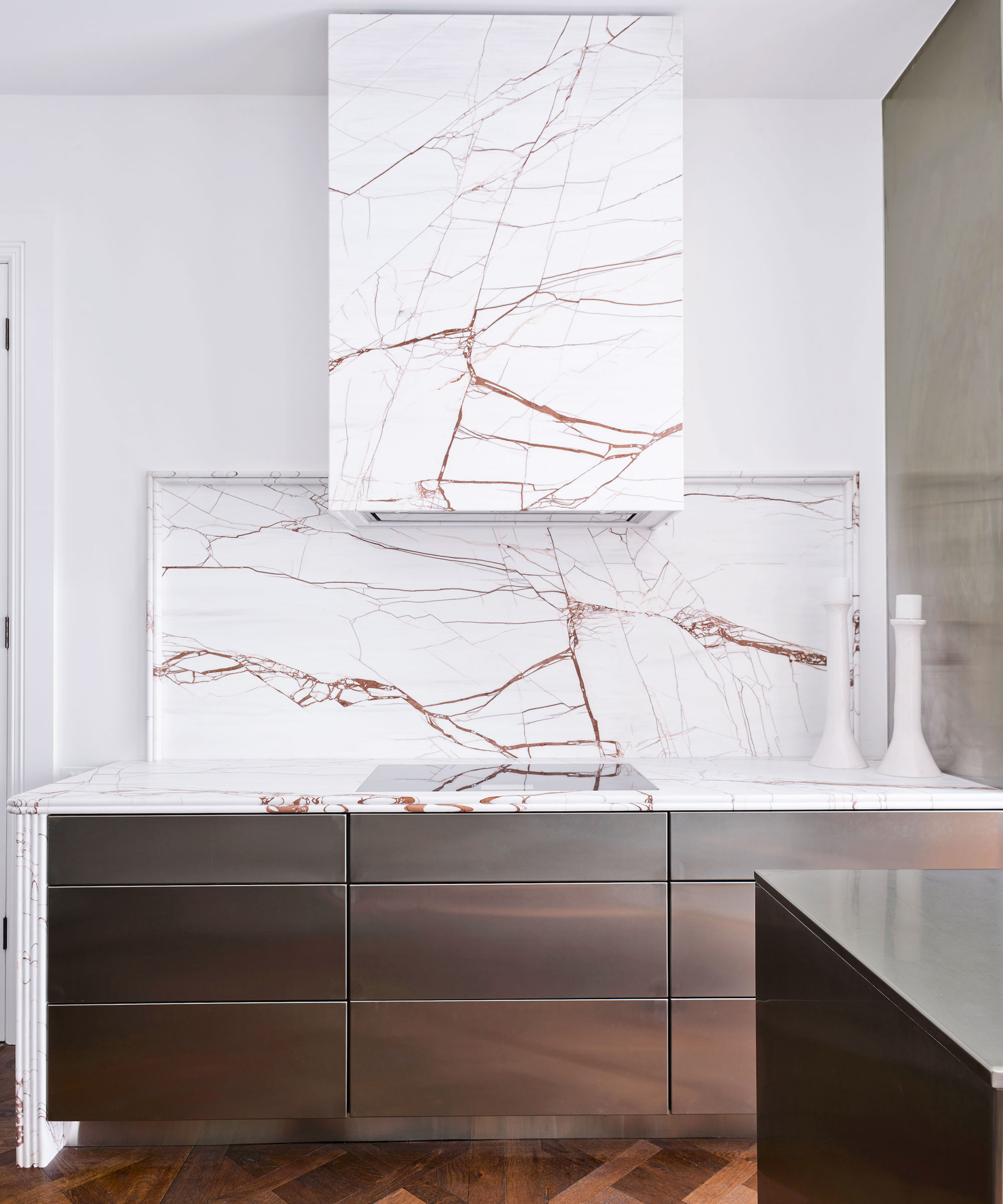
Cladding a hood in stone that matches the kitchen countertop, backsplash, or both, is a sophisticated way to frame your cooking area, says James Rayner, bespoke product manager at Westin. A point proved by this composition in Rosso Alpi marble by Sydney-based Tamsin Johnson.
‘Be aware you may need the ceiling strengthened to carry the weight of a stone-clad hood; your stone supplier can provide individual sheet weights to help with structural calculations,’ says James. ‘External ducting is best for maintaining the clean lines of the hood, but if recirculation is your only option, do check where the air will vent back into the room. A discreet vent at one side or a gap at ceiling level is preferable to a front vent.’
4. Go big
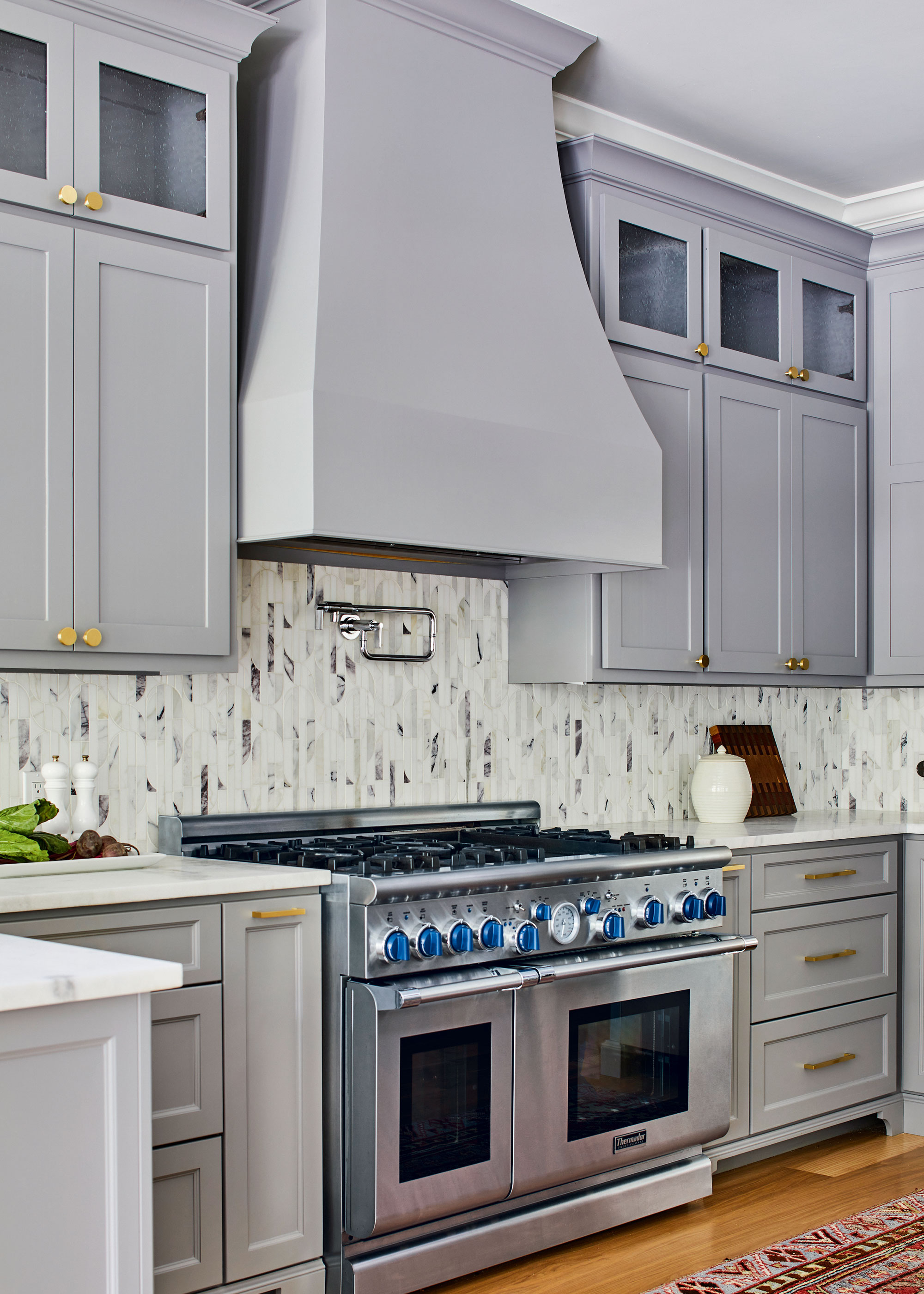
When designing a kitchen, an outsized canopy hood is guaranteed to put your cooking area firmly in focus. As part of a refresh of her client’s existing kitchen, interior designer Mel Bean repainted the cabinets in Farrow & Ball’s Plummett and installed a new hood.
‘The previous bland box felt severe and lacking in character,’ explains Mel. ‘The width of the new hood that we had custom made was governed by the existing wall cabinets, but the height was extended right to the ceiling, correcting the proportions and creating a new primary focal point.’ Sharing the same gray painted finish as the surrounding cabinetry achieves a simple, calm elegance.
5. Make a statement
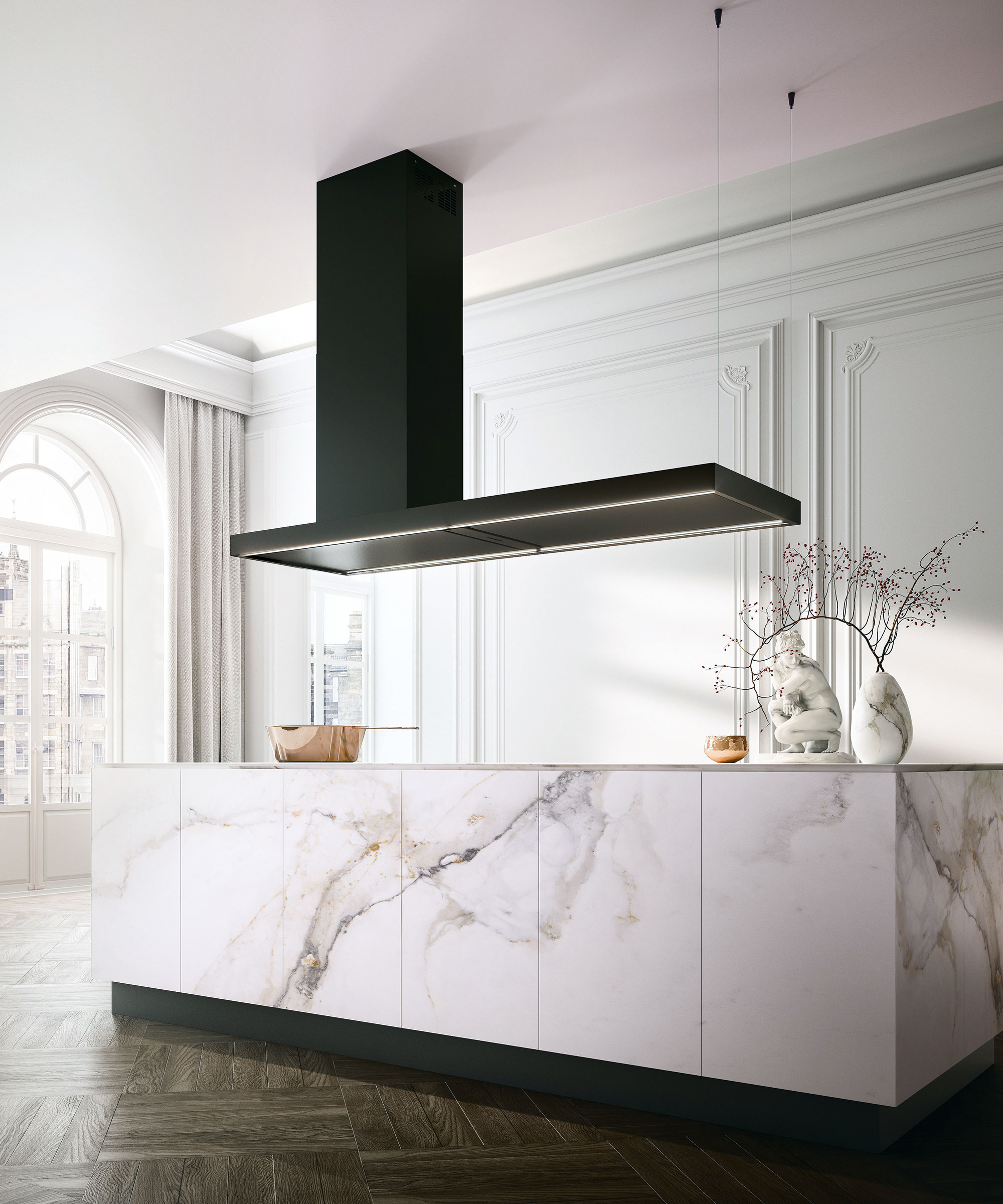
The more searing and stir-fry style cooking you do, the more crucial it is that your extractor is up to the task – especially for island designs in a chef's kitchen like this one. As there is no wall to help channel the steam upwards, a generous venting area is key.
‘Look for an island design with top extraction rates of 800m3/h – there’s no point in having a stunning extractor that makes a huge impact visually but has poor suction!’ advises Sean Drumm, managing director of Falmec. ‘It’s also really important to select an island model that is super quiet, especially in open-plan kitchen environments.’
6. Give your space a modern twist
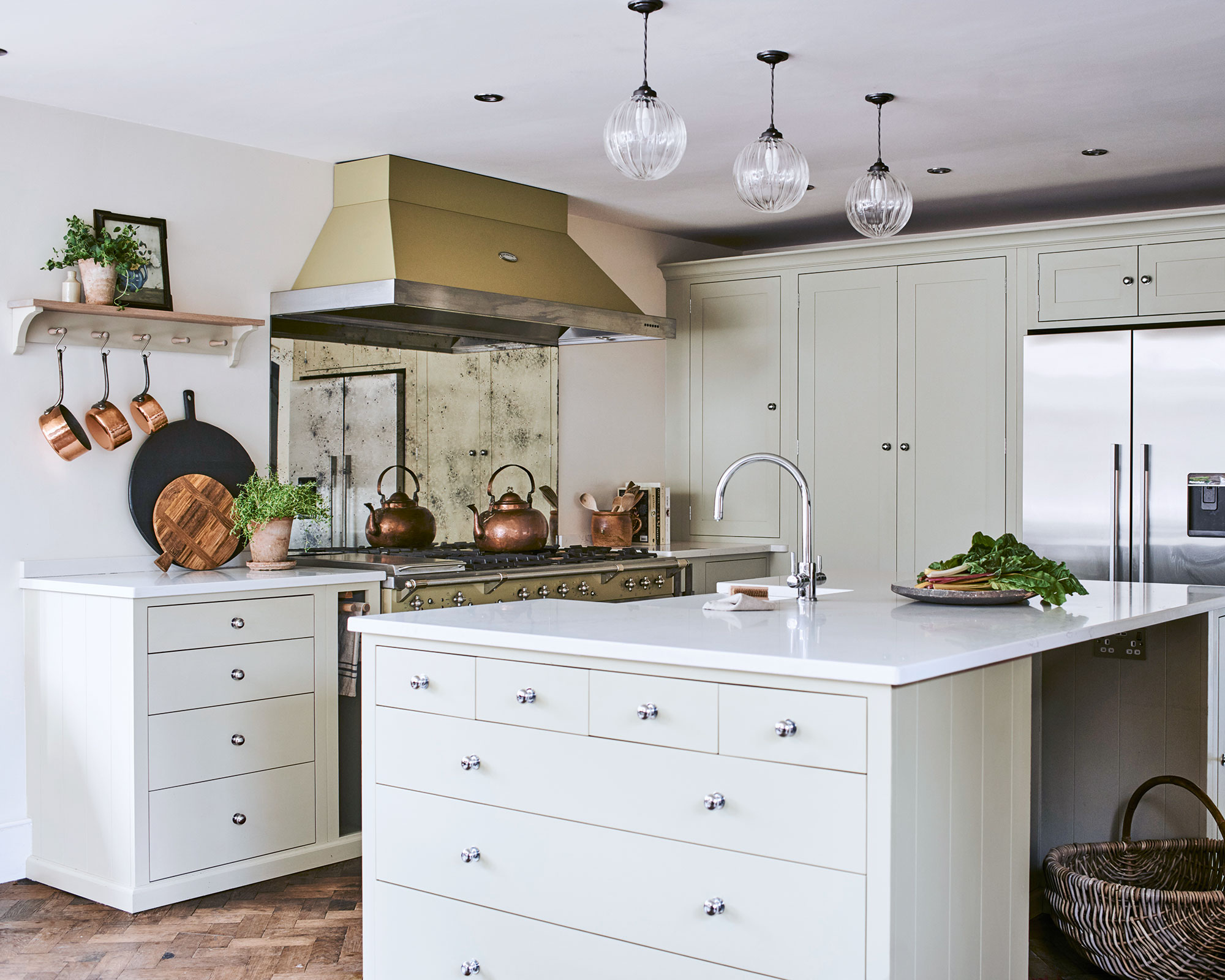
Treat a classically shaped cooker hood to a modern update by choosing on-trend metal finishes that complement the range cooker below.
‘This traditional style of hood with the unexpected use of brass or copper tends to work well with a Shaker-style kitchen as it has a slightly industrial feel that sits comfortably with the simplicity of the cabinetry,’ adds Simon Temprell, interior design manager, Neptune. ‘You could extend the impact of the hood by using the same metal sheet material for the splashback, or, in the case of this project, use antiqued mirror for a vintage feel.’
7. Choose an architectural design
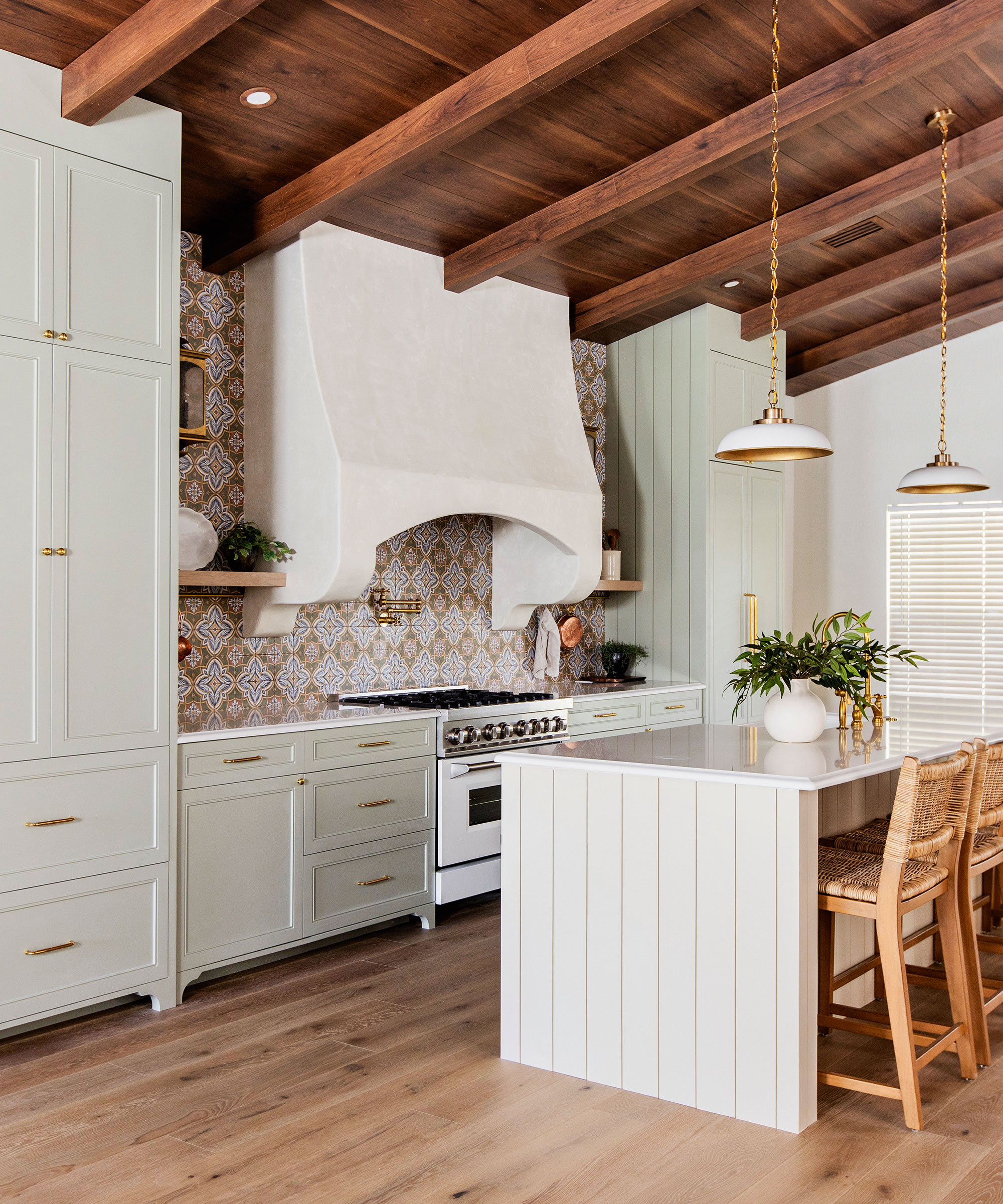
A simply plastered chimney-style hood can pass as an original architectural feature, which can help ground a shiny new kitchen. Enjoying a style revival right now, the most impressive plaster hoods are outsized, with clean lines and a subtly textural finish that emulates solid stone.
‘The soft curve of the plaster range hood in this kitchen provides a contrast to the cabinetry framing, standing apart as a stunning focal point within the room,’ says Teri Simone, head of design, Nieu Cabinet Doors. Try not to crowd a plaster hood with wall cabinetry or excessive shelving as these sculptural designs benefit from a little free space on either side.
8. Invest in design with hidden storage
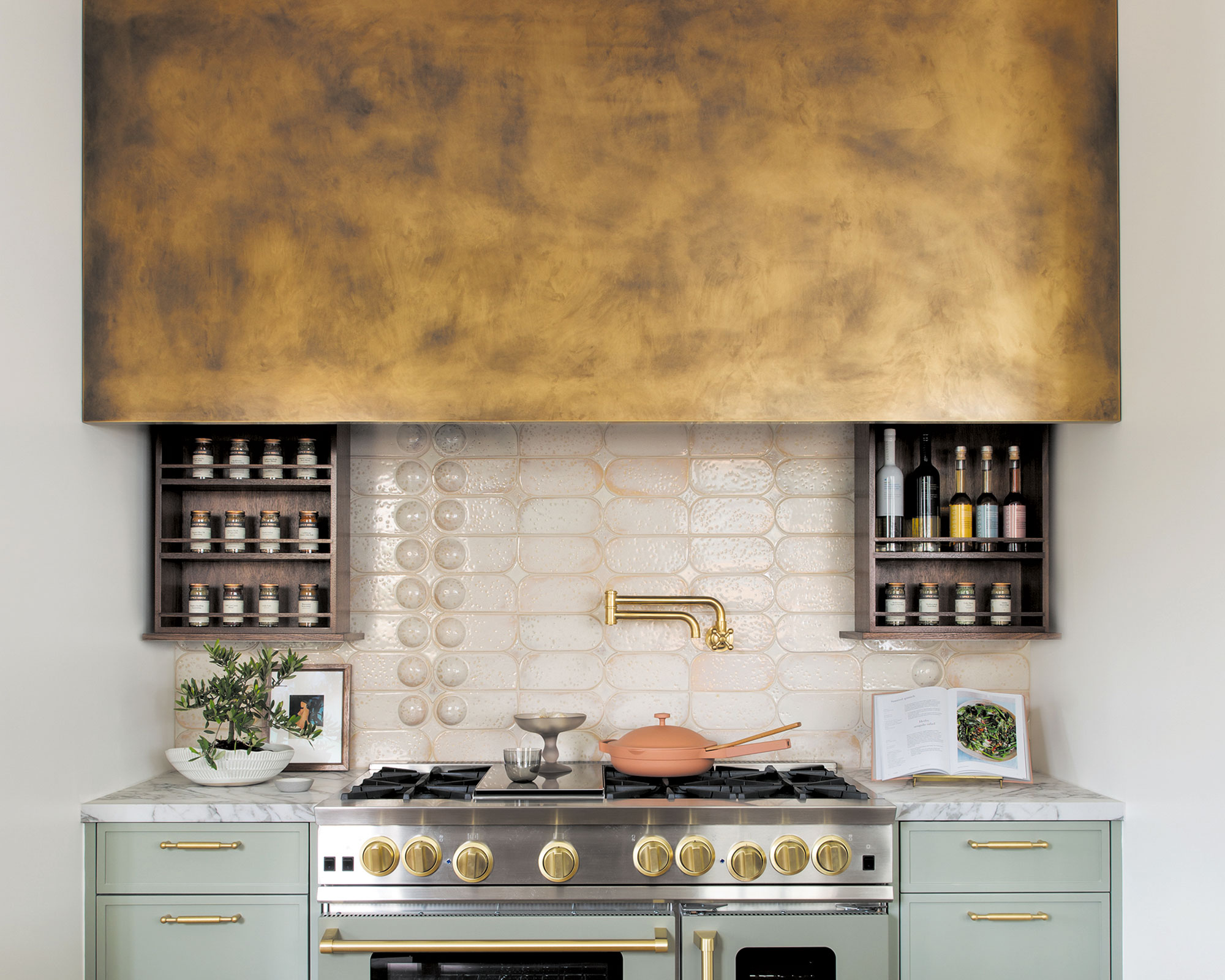
While extra-wide hood designs are undoubtedly impactful, they often result in storage sacrifices. Not so with this genius creation by San Francisco-based designer Regan Baker.
‘Working within an existing nook, we had to be creative with the wide space. The 46-inch burnished brass hood liner accommodates two custom-designed and motorized spice racks that help maximize storage and ease of use when cooking,’ explains Regan, who won a design award for the concept. ‘Through innovative design, we were able to achieve a unique balance of function and beauty that is stylish, sophisticated, and a true statement,’ she says.
9. Modernize with an industrial touch

The extra-wide stainless-steel extractor in this painted kitchen was curated to knock out the stuffiness of the formal cabinetry design.
‘Our client wanted fun and youthful instead of sleepy and traditional,’ explains interior designer Roger Higgins. ‘It seemed like an obvious choice to implement an oversized scale for the hood design, using stainless steel and brass accents to lean into an element of commercial design in contrast with the painted cabinetry. The large metal accent of the hood design provides just the right amount of visual interest when paired with the custom stainless-steel corner sink, wood island and marble counters.’
Getting the extraction right in your kitchen is integral to creating a healthy and clean home. Not only does extraction remove odors, but it can also take away grease and steam, making your kitchen easier to maintain and more pleasant to spend time in. The extractor needs to complement your hob and your kitchen layout, too – as well as fit the aesthetic of the room.
Bold designs will bring flair, and an extractor should be chosen with as much care and consideration as the rest of your kitchen fixtures and fittings.







